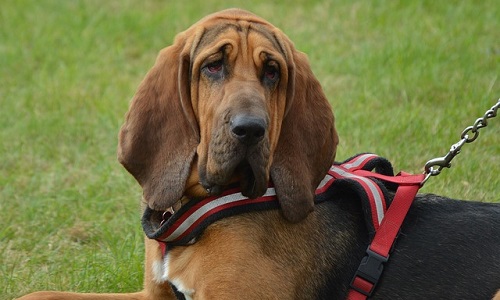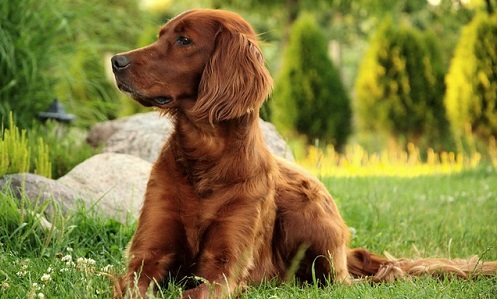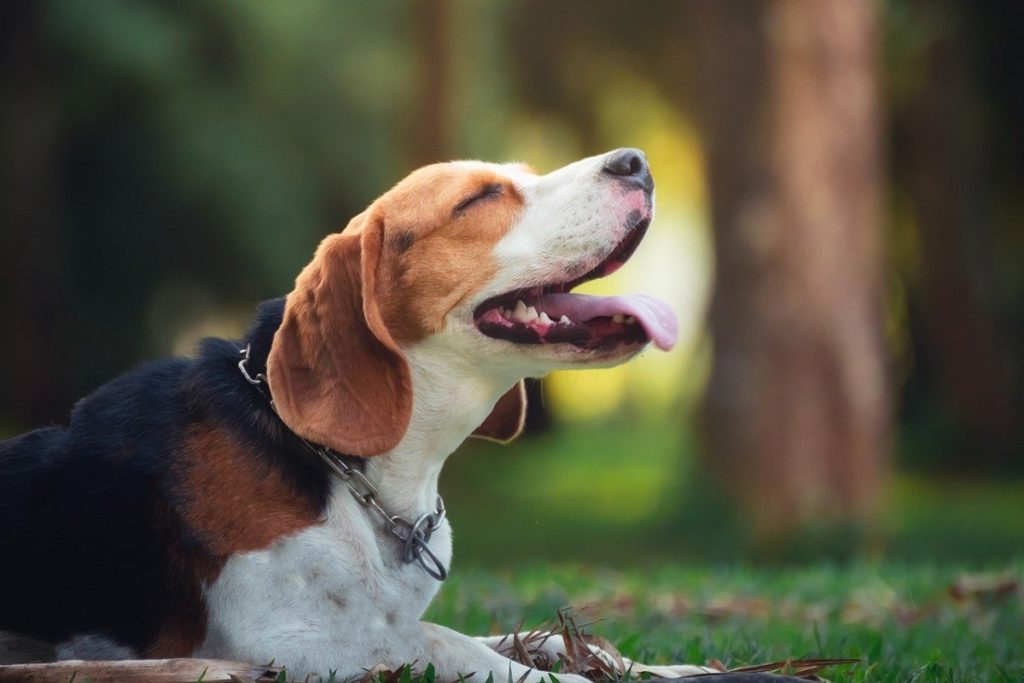As bird dog trainer Steve Reider says, “My gundogs are like the American Express Card; I never leave home without them.” Hunting dog breeds are more than a means to an end for their owners, though – these canine companions are a joy to spend time with as well.
While there are exotic breeds, sub-breeds, and crossbreeds liberally sprinkled throughout the ranks of sporting dogs, some tried-and-true breeds rise above the rest in terms of longevity, popularity, and recognition. Whether it’s their iconic looks, their undeniable prowess on a hunt, or natural instincts that are easy to train and manage, these dogs can be found in every show and in homes throughout the world.
This list of hunting dog breeds represents the superstars of the sporting dog world, and perennial favorites, both in terms of pets and in dog shows, and represent a unique cross-section of body types, abilities, and genetic traits. Thinking of bringing home one of these canine superstars? Check out this list below of some of the best hunting dog breeds known to man.
The Beagle
First recognized by the AKC in 1885, this short, sweet, and energetic hunting breed is most commonly seen in a 3-color coat of brown, white, and black. The deep, baying bark of this breed belies his reasonably small stature, and his long, floppy ears help narrow scents of his prey to enable him to track more efficiently. The Beagle’s short, sturdy legs resemble those of a Basset Hound, but look more proportional to his head size and body length. Beagles are used to hunt ground quarry, such as hare, rabbits, foxes, coyote, and roe deer, and use their powerful sense of smell to lead their hunting masters to prey quickly and easily. Their noses are so sensitive, in fact, that they’re widely considered second only to the Bloodhound in terms of skill in tracking.
The Bloodhound
 While not as speedy or agile as some hunting breeds, Bloodhounds are the undisputed champs of sniffing out trails left by game. When hunting in challenging terrain or tracking down particularly elusive prey, the Bloodhound tips the scales considerably into the hunter’s favor. Their droopy jowls and ears help keep their nose focused on the ground, blocking out distracting scents and sights to enable them to stay laser-focused. His large stature makes him adept at hunting larger ground prey, such as wild boar or deer, but the physical act of pinning and dispatching prey is best left to his human keepers.
While not as speedy or agile as some hunting breeds, Bloodhounds are the undisputed champs of sniffing out trails left by game. When hunting in challenging terrain or tracking down particularly elusive prey, the Bloodhound tips the scales considerably into the hunter’s favor. Their droopy jowls and ears help keep their nose focused on the ground, blocking out distracting scents and sights to enable them to stay laser-focused. His large stature makes him adept at hunting larger ground prey, such as wild boar or deer, but the physical act of pinning and dispatching prey is best left to his human keepers.
The Golden Retriever
When it comes to duck and bird hunting, there are few dogs more well-suited to a hunt than a Golden Retriever – only the Labrador Retriever gives him a run for his money. The Golden works particularly well for duck hunting, thanks to the “soft mouth” breed trait that appears as soft, spongy muzzle corners that gently grip deceased prey without damaging it during the trip back to the hunter’s side. His webbed feet and thick coat let him tackle water with ease, ensuring that every bird shot down is collected both efficiently and cheerfully. This zest for work and play alike has awarded the Golden a consistent place among the United States’ most popular dog breeds, where it currently sits in the number three spot.
The Pointer
For the serious hunter tracking his prey through dense underbrush, the bane of quail, grouse, and other ground birds is undoubtedly the Pointer. One of a small handful of recognized Pointer breeds, he will adopt a specific stance upon spying his prey: leg up, head out, muzzle pointed. This sweet-tempered “double threat” of a hunting dog not only pinpoints the hiding places of quarry and remains still as it’s flushed, he’ll also retrieve his owner’s kills once the gun is lowered. Sleek and fast, he’s built for fast sprints in the wake of equally-fast birds, and his excellent eyesight can follow them even into the densest tangles of vines and bushes.
The Coonhound
A thoroughly American breed, the Coonhound is skilled at tracking, hunting, and killing raccoons, squirrels, foxes, and other small North American prey. His slender body and pronounced waist give him the aerodynamic boost he needs to cover small distances in a breathlessly short time. A trademark antenna-like tail sticks straight up while he’s in chase, making it easy for a hunter to spot and follow his trail. Several variants of the Coonhound exist both in America and abroad, including the speckled Bluetick, the English Treeing Walker, the liver-red Redbone, and the Plott Hound.
The Labrador Retriever
No list of popular hunting breed dogs would be complete without the Labrador Retriever, which has the additional distinction of being the most popular dog breed in the United States. Smart, sweet, and an excellent family dog, he is also a skilled hunter from a genetic and personality standpoint. A common choice for duck hunters, the “Lab” has the coveted soft mouth trait and is able to bring back felled waterfowl unharmed to his hunting owner. A short coat length and webbed feet mean he can tackle water with ease in temperate months, giving him a noticeable advantage over his water-dwelling, feathered quarry.
The Irish Setter
 The slender legs and sleek coat of the Irish Setter were uniquely bred for hunting came across the rolling hills of Ireland, where the breed originated. Today, they are still heavily favored for certain hunting applications, namely tracking down ground-frequenting birds like quail, grouse, and pheasant. While the Irish Setter won’t typically make the kill himself, he sends clear messages to his human companion, laying down on his belly in front of a den or underbrush where he’s scented birds to be flushed out and shot. Back at home, he’s just as useful as a family companion, thanks to a pleasant and patient nature and a natural inclination to play fetch.
The slender legs and sleek coat of the Irish Setter were uniquely bred for hunting came across the rolling hills of Ireland, where the breed originated. Today, they are still heavily favored for certain hunting applications, namely tracking down ground-frequenting birds like quail, grouse, and pheasant. While the Irish Setter won’t typically make the kill himself, he sends clear messages to his human companion, laying down on his belly in front of a den or underbrush where he’s scented birds to be flushed out and shot. Back at home, he’s just as useful as a family companion, thanks to a pleasant and patient nature and a natural inclination to play fetch.
The Weimaraner
A steady and trustworthy “gun dog,” the Weimaraner is also called a “grey ghost” for the way he silently moves and stays aware of his surroundings. This trait comes in particularly handy when hunting skittish prey like rabbits and foxes with his human companion, as he’s well equipped to find, but not alert, these noise-sensitive animals. Stocky and sturdily-built, his short coat makes him an excellent choice for moderate-weather hunting, such as in the spring and fall. While excellent on the field, potential owners should be aware that there’s a reason fans call this breed a “Velcro dog” – he will want constant companionship and attention or he may begin to vocalize or become destructive out of boredom.
The English Fox Hound
 The roots of the English Fox Hound trail far back into history, when dwindling wild forests caused a shift from aristocratic stag hunting to the faster-paced, more readily available fox. As the quarry changed, so did the hounds used to hunt it: the English Fox Hound arose from a combination of stag hunting hounds’ strong sense of smell and the lithe long-legged speed of Greyhounds and Whippets. The result was a strong, capable fox-hunting hound that worked well in packs and had a distinctive baying bark that could be heard some distance away. The English Fox Hound closely resembles the Beagle in torso and face shape, but adds quite a bit of height and gait length. His attractive and appealing form has long been a popular subject matter for hunting portraits, paintings, and other creative works.
The roots of the English Fox Hound trail far back into history, when dwindling wild forests caused a shift from aristocratic stag hunting to the faster-paced, more readily available fox. As the quarry changed, so did the hounds used to hunt it: the English Fox Hound arose from a combination of stag hunting hounds’ strong sense of smell and the lithe long-legged speed of Greyhounds and Whippets. The result was a strong, capable fox-hunting hound that worked well in packs and had a distinctive baying bark that could be heard some distance away. The English Fox Hound closely resembles the Beagle in torso and face shape, but adds quite a bit of height and gait length. His attractive and appealing form has long been a popular subject matter for hunting portraits, paintings, and other creative works.
The Chesapeake Bay Retriever
First bred from English dogs rescued from a Maryland-area shipwreck, the Chesapeake Bay Retriever was built for aquatic pursuits. While one of his original purposes – fetching fish that fell off of hooks or out of nets – is less in-demand today, he’s still an excellent companion on a duck hunt or fishing trip. The “Chessie” has a slightly shaggier coat than the Labrador Retriever, owing to their water-loving breeding lines. The slightly wavy, oily finish to his fur helps repel moisture, allowing him to dry off more quickly and get back to the business at hand. His “soft mouth” trait is excellent for retrieving ducks, geese, and other waterfowl felled by a gun-toting hunter, while his large webbed paws give him speed and strength in the water.
These hunting dogs represent the best of the best in the canine world; not just in owner selection, but in performance and history. Their breeding lines are strong and stable, and their recognizable traits make them fan favorites for hunters in need of a four-legged companion. While these hardworking dogs are on the trail, no quarry is safe: super-smelling noses, strong legs, sharp eyes, and a heart for hunting mean they’re always at the head of the pack.
Sources Cited:
1) “Hound Group.” American Kennel Club (AKC.org), (no publish date), https://www.akc.org/dog-breeds/hound/. Accessed November 22, 2019.
2) “Sporting Group.” American Kennel Club (AKC.org), (no publish date), https://www.akc.org/dog-breeds/sporting/. Accessed November 22, 2019.
3) Stregowski, Jenna, RVT. “Best Dog Breeds for Hunting.” The Spruce Pets.com, November 3, 2019, https://www.thesprucepets.com/best-hunting-dogs-4177817. Accessed November 22, 2019.
4) Lynn, Brian. “The Best Hunting Dog Breeds for Every Game Animal.” Outdoor Life.com, October 21, 2019, https://www.outdoorlife.com/hunting-dogs-best-dog-breeds-every-game-species/. Accessed November 22, 2019.




